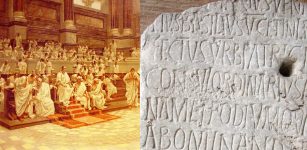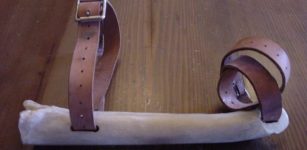Oldest Door Lock Comes From Ancient Egypt
Question: When was the door lock invented?
Answer: Locks have been around since man first decided to keep his belongings to himself.
The oldest preserved door locks we have ever found belong to the ancient Egyptians and date back to at least 2000 B.C. It’s believed, but not proven, that they existed even earlier than that.
What separates the Egyptian lock from later inventions is the fact that the whole thing was made out of wood, the key included.
The first Egyptian lock comprised a wooden bolt securing a door, with a slot with several holes on its upper surface. A device attached to the door contained wooden pins which would drop into the holes and secure the bolt. The key, also wooden, was a large toothbrush–shaped affair, whose ‘bristles’ were actually pegs that matched the holes and pins in the lock. To open the door, it would be inserted into the keyhole located below the pins and lifted, raising the pins and allowing the bolt to be slid out.
See also:
Ancient Egyptians Had The First Governmental Health Care System
Merkhet – An Ancient Egyptian Timekeeping Instrument
Why Ancient Egyptians Used Pillows Made Of Stone
In fact, the basic idea for a lock—the pin tumbler—is still the most common type used today. There was one minor difference between their keys and ours though: Theirs were nearly a foot long, which made it much harder for would-be thieves to pick the locks.
It’s believed that the Egyptians designed these complex locks as a way to guard valuable items or places of religious significance. A simple latch or bolt normally sufficed, but this new system enabled places to be cordoned off, making actual security guards unnecessary. Also, the door could only be locked (or unlocked) from the outside, and a bolt was used to do the actual locking.
Locks and keys are mentioned in the Old Testament and were used by the ancient Greeks, although in a different and less secure form than their Egyptian counterparts.
The Romans created new types of door locks and developed the idea of the Egyptian lock, substituting iron for the wooden lock and often bronze for the key. Keys were no longer too big to lose (or lift), indeed some Roman keys were small enough to wear on a finger. Roman locks, too, were an improvement on the Egyptian model. ‘Wards’ were developed – projections inside the lock which demanded a corresponding ‘bit’ on the face of the key. Only the key with the correct slots for the projections to pass through would be able to rotate and throw the bolt.
MessageToEagle.com
Source: Wheaton Lock Service











